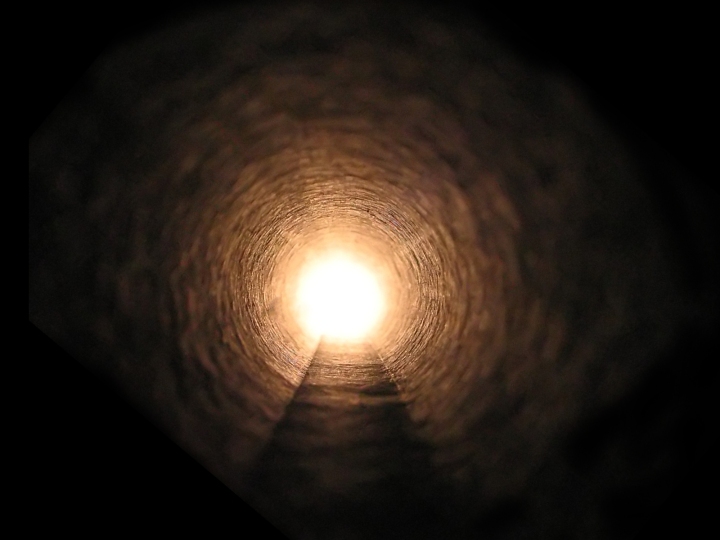It’s Holy Thursday, a day I’ve always loved. Holy Thursday was the day before “the bad day,” the day we captured and killed Jesus, the day before the whipping and crucifying and dying. When I was young, I used to get a migraine every Good Friday. Our mom would pull us in – from twelve to three in the afternoon, the hours Jesus hung on the cross – no TV, radio, or friends, just quiet playtime or reading, in solidarity with Jesus. It was like our own mini, pint-sized crucifixion. I used to dread that time. As the inevitable call to come home crept closer, I could feel the headache coming on. Later, there would be a church service, a dark, somber affair, with great drama, a reenactment of Jesus’ suffering and death, a time for compunction and weeping for all that we had done to put him there, followed by a simple meal at home. I don’t remember those evenings after church. I imagine they weren’t joyful, lighthearted, or boisterous, our usual routine. I imagine we slipped off to bed, each to our own quiet reverie, overwhelmed by all that we had seen and experienced.
I am grateful, however, that Good Friday was the only day of the year where the image of Jesus’ death, and our complicity in it, was emphasized. The substitutionary atonement theory existed, but not as a major theme in my life. We weren’t told daily that Jesus died to pay for our sins, that the difference between our guilt and God’s greatness could only be overcome by the blood of God’s own son. Though it was on full display once a year, it was quickly followed by beautiful, glorious Easter Sunday. Before dawn, we were up and dressed and eating candy. By 6 a.m. we were singing Alleluia en masse on the church lawn as the sun rose in the East, secure in the knowledge that death had lost its sting. The risen Jesus had gone to prepare a place for us in the dazzling glow of the glory of God.
For some readers, my Easter memories might sound similar to your own, while others might think my family sounded like religious nuts. Who exposes a child to a reenactment of an ancient death penalty and tells them (or allows them to be told) it’s at least partly their fault? It all seemed so normal at the time…
But what is normal now?
That’s the question I ask myself continually. What is the new normal? What is right for today? What have I taught my kids? What do they know, or believe? More importantly, what do their hearts tell them?
I have raised them in Church, with religious education and the Bible. They know most of the prayers, and have received the appropriate sacraments. I did these things as I felt called, honoring the tradition I was raised in, the very one that set me on my journey with God.
I pray their hearts tell them that Love is the answer, that connection and compassion are the keys to happiness, that authenticity is the only way to be a person of integrity in the world and to be authentic means that you need to know who you are. The only way to know who you are is to be still long enough to find out, to be willing to listen to the urgings of your heart, the still quiet voice inside you, and when you hear that voice, you have to be brave enough to act on it and be willing to fail, to know humbly that no one has all the answers, but that questioning the status quo, the way things are, is the only way to keep growing. If you aren’t growing, you are going backwards. And, oh yes, in case you forgot, Love is the answer.
And by Love I don’t mean that sickly, sweet, destructive emotion that is depicted in almost every TV show and movie produced in Hollywood. Love is the ability to keep your heart space open when everything in you wants to shut down and say, “No, not this.” Love is the ability to be brave when you want to run away, to do the right thing when the wrong thing or even no-thing is so much easier and safer. Love has the power to change the world, because it is the root of compassion, justice, equality, hope, humility, commitment, faithfulness, and tenderness.
Do my children know this? Probably not yet, not entirely, but I am sending them the message every chance I get, including tomorrow, Good Friday, “the bad day,” when I will ask them to attend a service with me. What I hope they see, when we commemorate the death of Jesus, is not a death that “had to happen” because we sinned. I reject that premise entirely. But rather the underlying truth of the universe it reveals:
Something has to die, so that something new can be reborn. It might be a dream, a relationship, a belief, a tradition, or even your very sense of self, but what follows can always be better than what came before if you Love. If you hold your heart space open, if you don’t shut down in bitterness, or fear, if you forgive reality for being what it is, Life will begin again. Love always wins.
Pierre Teilhard de Chardin called God, “Love energy.” Love is the Alpha and the Omega point, where we came from and where we are headed, but we will get there a lot faster if we participate in the process. By choosing Love ourselves, we can live an Easter miracle each and every day.
P.S. If you remember my Holy Thursday tradition, it continued this year. I am so grateful that at their ages and stages, my children still participate in this ritual of tenderness and blessing. You can read more about our annual foot-washing here and here.
